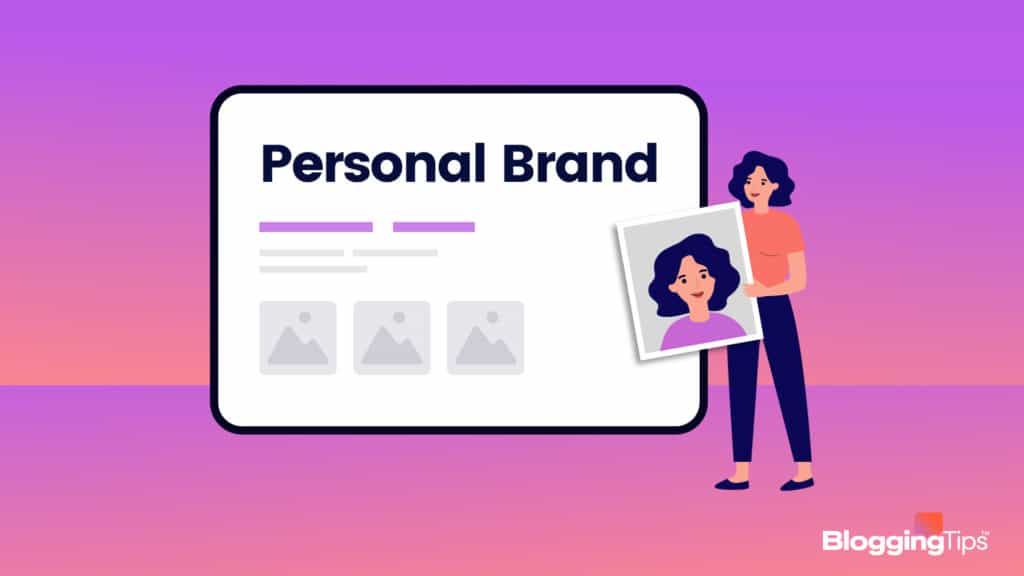People are creating blogs for so many different things, and it’s because creating a website and/or blog is very easy.
Something I continually cover in my articles is the importance of making sure you have a great online presence, while also showing off what you are great at.
This is also referred to as personal branding.
An excellent way to accomplish this is by registering a domain, purchasing hosting, and installing WordPress to create a resume-based website or blog of your own.
WordPress makes this process extremely easy, as it’s an all-in-one solution for site and content management, while also bring 100% free.
Many top hosting providers offer one-click installation, so all you need to do is enter a username and password before hitting the “install” button
The most difficult things about the entire process are coming up with an idea or putting an existing idea on paper.
However, if you know what you want to do, you’ll have no problem getting started with your very own blog.
With that said, one trend I see developing quickly is online resumes.
People are now displaying their credentials online so it’s easier for employers to find out about the person’s skill set.
For example, instead of me sending a resume to a potential employer, I can shoot them an email with an URL to my online resume.
LinkedIn helped with the shift in trends because it’s a quick way to connect relevant people together.
But, you still have people building their own personal brand online by creating a blog with their entire resume posted.
Today, I’ll be exploring personal branding and then show you how to develop a presence and personal resume online.
Coming Up With A Personal Brand
It’s a leadership requirement to build personal brand.
It’s an indication of what you can offer: contribution and performance.
A personal brand builds skills and character.
A blogger’s success depends on this personal brand.
Take the name of any famous blog. Chances are, its recall factor is higher in terms of knowing the blogger behind the blog.
There is Pat Flynn from Smart Passive Income, Jitendra Vaswani from Bloggers Ideas, and Darren Rowse from Pro Blogger.
Now, when you recall the name, the mind brings forth a certain impression, created either via your personal interaction with the person or through professional growth you saw around the web.
It’s the reputation built through personal and professional commitments, contribution to the blogging ecosystem and the general goodwill created with the followers.
It’s tough to build personal brand; takes years of commitment and leadership skills.
As Emily from Corporate Catwalker says, “authenticity and personality is the key”.
If you want to build personal brand, I hope these commandments will be of use.
5 Commandments to Build Personal Brand

#1 Be good and do what you say you’ll do.
Understand your strength and how those strengths or skills are going to help the world.
Every popular blogger started with the aim to solve a problem – they are a voice for the world.
What is your aim?
Stick to commitments.
Think of someone who fulfilled a commitment.
What did the gesture make you feel?
You will consider the person genuine, dependable and reliable and in all likelihood, you wouldn’t stop from giving that person a recommendation, right?
Become this person.
As a blogger, focus on the content 80% of the time.
#2 Tell stories.
We all relate to stories better than anything else.
The form of the story – text, video, images – doesn’t matter.
What we understand is the story and our relatability towards it.
For example, I remember Pat Flynn as the person who was struggling to make online passive income and finally does it through hard work and dedication – this is my perception of him and I relate with his story.
Similarly, I remember John Chow who was there at ‘the right time’ when the Internet was growing and became one of the world’s top bloggers.
All successful people tell a story. Take Jack Ma, the founder of Alibaba.
Fired from every job ever and stressed with the lack of opportunities, a sudden resolution and commitment led him to start Alibaba and we all know his status in the entrepreneurship ecosystem today.
Aspire to be big. Be relatable. Tell “authentic” stories.
#3 Have uniform online presence.
Securing the domain with your name is important across all channels.
Neil has NeilPatel.com, and a variety of others have their own names as their domain.
It’s necessary to use the same name identity on all channels such as websites, domain, Facebook, Pinterest, Google+, Instagram, email communication, Skype and any other means.
Your online image should be “uniform” – same name, domain and image.
[su_note note_color=”#E5E5E5″]
Editor’s Note:
Choosing your blog name and url is a critical step in the success of your personal brand. We suggest reading our Guide To Successfully Choosing A Blog Name And URL.
[/su_note]
#4 Do not appeal everyone.
You can’t.
What I specifically mean is you can’t appeal to every kind of people.
If you want to be in the HR field, concentrate on the same.
Don’t talk about “making money online”.
It not only comes across as stupid but also dilutes your effort to build personal brand.
There is no point in trying to be the jack of all trades and certainly, you will be the master of none.
Only exception is when skills overlap. For example, being a content writer, content marketing is also a specialized vertical and talking about social media is a by-product of working in the Content field.
There is a notion of association.
Don’t go into the multi-skill segment.
Take one specific skill/niche and try to become an authority on that one.
#5 Create and build influential relationships.
Blogging has changed since I started in 2011.
The blogging world was simpler and you could build relationships simply.
Connecting with influencers is a struggle these days. Network a lot.
If you’re just starting out with networking, use tools like Brand Mentions to find out about industry influencers, what they are doing and connect with them.
I am using Brand Mentions for the last 2-3 months and it has changed the way I function online in terms of mentions monitoring and following chosen people.
You can search for any person / brand and see their online presence.
Since brand building and influence outreach follows a symbiotic relationship, you can also use the tool to measure your brand presence.
For example, I created a search parameter with my name and the tool sends me instant emails whenever my name is mentioned anywhere on the web. It’s better than Google Alerts.
Now that we’ve gotten the basics out of the way, let me show you how to set up a blog you can use for your personal branding efforts.
11 Effective Platforms for Building Your Personal Brand
Building a personal brand allows you to showcase your personality and the personality of your business, which leads to more consistent marketing efforts and a loyal consumer base.
But what platform is the most effective for building your personal brand?
There are so many different mediums out there, from social media to blogging to radio, that it’s important to focus on the ones that will best convey your brand’s message.
From contributing content online to establish yourself as a thought leader to providing quick glimpses of your brand through social media, these 11 entrepreneurs from YEC share the platforms they’re using to establish their own personal brands.
1. Interviews

While I love sharing content on my own platforms, interviews have been what’s really allowed me to expand my reach and showcase my brand.
There’s something fun and fresh about the interaction (if it’s not overly scripted), and it allows a listener to really see personalities shine through in a way that’s interactive.
Bonus points if we get to take questions live during the interview!
Kelly Azevedo, She’s Got Systems
2. Contributed Content in Online Publications

I contribute relevant, helpful information in online publications that reach my company’s audience.
Since we are a content marketing firm, we focus on business and marketing publications.
Building my platform as a leader in my space has helped me develop a strong professional brand, but more importantly, it’s helped my company thrive.
3. Medium

With Medium, I reach niche audiences but retain message control; there are no editors or guidelines to influence my voice and thus my brand.
One of my co-founders, who had never gotten his guest posts published or his speaker proposals approved, started publishing on Medium.
The feedback was positive and helped him evolve his point of view.
He has now spoken at three recent conferences.
4. Big Conferences

Giving keynotes or participating on panels at big conferences has been effective for my personal brand.
Speaking does many things all at one. You’re communicating your authority on a subject to a large audience.
Promoting the speaking event on your website gives you social proof and it makes great content for social media.
Lastly, you meet other A-players on your panel or in the green room.
Andrew Thomas, SkyBell Doorbell
5. Podcasts

We started our podcast, The BiggerPockets Podcast, the same way we do many things — as an experiment.
That experiment proved to be one of our greatest successes.
There’s little in the form of media that’s more personal than a podcast.
Our show has allowed us to reach people at a depth we could never before achieve, has given us access to thought leaders and has been great for brand loyalty.
6. Twitter

Twitter has been a personal favorite for me because I like the way I can share thoughts and opinions in a format that encourages others to interact with me.
This has proven to help build a following that enhances the other channels I use both online and offline.
Abhilash Patel, Recovery Brands
7. TV

Getting interviewed on TV is the most effective platform for building your personal brand.
TV provides powerful visual and auditory communication and is viewed by consumers as highly exclusive.
As a result, TV separates your personal brand from others and almost immediately distinguishes you as an authority.
TV appearances are also great marketing tools!
8. Facebook

In the last 10 years, Facebook has enabled me to build both my personal and professional brand online unlike any other platform.
I’ve made friends and found leads. I’ve shared pictures, videos, blog posts, thoughts and projects with my community of friends, followers, clients and potential clients.
There’s no other platform as comprehensive as Facebook in enabling you to express yourself.
Ayelet Noff, Blonde 2.0
9. Snapchat

Snapchat is ridiculously effective for getting speaking gigs, podcasting guest spots, outsourcers and more.
The intimacy provided by the 10-second videos gives you the ability to convey value and get to know who people really are.
Focus on your “category.”
What are your measurable goals?
Connect with people who are doing it well.
10. Guest Writing

By becoming a guest author for various sites and media publications, you can establish yourself as an authority and build credibility and trust.
By writing for authoritative industry verticals and sites like LinkedIn or Medium, you can get your name and brand out there and build your reputation as a thought leader.
11. Instagram

Instagram is the best platform for building a social media presence for your brand.
Users only spend seconds per photo and will scroll through your feed so quickly, but will immediately know if they will give it a follow or not.
Through Instagram, we are able to stay consistent with our brand, share our creative eye and style, and showcase all of our best work for followers to view.
Leila Lewis, Be Inspired PR
Create A Blog To Showcase Your Brand
Like I briefly mentioned above, for your online resume website, I recommend that your domain name should be registered as your own personal name.
Try and get the following – www.yourname.com.
This is great because it’s you (your brand), and represents your entire qualifications.
Also, when you introduce yourself to someone and they want to learn more about you, they can browse over to www.yourname.com.
To register your own personal name, you can head over to GoDaddy.com and do a quick search by typing in your name.
At the same time, you can purchase hosting and I recommend starting with the lowest package available which would be shared.
You can always move up at a later if you require more bandwidth and/or space.
Next, installing WordPress is not difficult because most of these hosting providers offer it with your hosting package.
The whole process shouldn’t take you more than ten minutes.
If you need some help, then visit the free tutorials provided by the hosting provider in the backend.
[su_note note_color=”#E5E5E5″]
Editor’s Note:
We’ve previously covered the ins and outs of registering domain names and installing WordPress in our “How To Start A Blog” guide. Check that out for a step-by-step tutorial on both.
[/su_note]
Once you have registered your domain, purchased hosting, and installed WordPress, it’s time to design your website.
The Design of Your New Resume Site
You want a design that represents you and your personality.
I recommend choosing a custom theme purchased from MyThemeShop or any other websites selling WordPress templates.
Find a theme which compliments your personality, and easy to configure.
But, from my experience many new themes are drag & drop, and responsive ready.
Pay close attention to the following –
- Fonts – Choose a font easy on the eyes so your visitor doesn’t have a hard time reading through your credentials. Make sure you use either Questrial, Arial, Century Gothic, and Verdana. These are compatible with almost any browser your using. You can view my own list of recommended fonts for websites to help with this decision process.
- Colors – You want to allow for the visitor to navigate easily and not push them away by using the hard font and website colors. Stick with what’s known as blue, gray, orange, white, black, and yellow. These tend to be easier on the eyes giving people the opportunity to read the text without having to move away continuously. In addition to the colors being used on your site, if you are going to create a custom logo for your site, be sure to consider these color options and the emotional triggers they might have associated with them.
- Layout – This is very important because you don’t want clutter on your website, and want to ensure the visitor doesn’t get distracted with irrelevant material. The best thing to do in this case is to visit other online resume websites and see what they are doing to stand out. Don’t copy the design exactly, but take the time to understand their colors, layout, and navigation. This will give you some great ideas on what you can add to your website.
If you need any help with the concept of how your resume might look on a website or blog, simply refer to your LinkedIn profile page.
LinkedIn has done an excellent job with taking personal profile content, business information, recommendations and expertise — while combining them all together in one seamless and easy to read format.
Try this same style when creating a profile site of your own.
Don’t Forget to Add Your Resume
Here’s the thing, if you’ve purchased an online resume template, then each section will be divided up accordingly.
I would suggest you fill out every section as it applies to your skillset.
For example, from my research, many of these templates have an about me section, multimedia section, portfolio section, and contact section.
Fill out each section and it’s important to be thorough because you are trying to sell yourself to the visitor or employer.
So, here are my best tips for each section when you’re ready to add information.
- Homepage – On this page add a photo of you with a quick synopsis of your skills. You can even add a little bit about yourself. Keep it short and sweet so people can pull out the important information right from the homepage. If they need to dig deeper, they can navigate to the about me page.
- About me – Here’s where you’ll discuss yourself and a quick point from of your skills. Don’t write everything on this page because you do have separate pages to discuss the in-depth experience. However, this page is great to quickly give them an overview about yourself. It should be in more detail them what’s on your home page. Follow these tips to create an amazing about me page that stands out from the crowd.
- Resume – I would label this section “resume” on the navigation menu. This is where you get into detail about your education, work experience, certifications, etc. Make sure you go into detail because of the more information, the better. Imagine if you were typing this out on paper, now ask yourself – what would you be writing? This is the place to sell yourself so keep this in mind. The cool thing is because it’s an online resume, you can always link out to other pages on your site to showcase individual skills. Don’t’ forget to add your certifications because these add more credibility to your bottom-line.
- Portfolio – Depending on the type of work you do, you might need to use this space to show off your expertise and prior work experience. For example, as a freelance writer, you’ll want to showcase your content and any customer testimonials you might have. Use this space wisely to display your best work because this does go a long way.
Final Thoughts
Online resume websites are becoming more popular each year.
It’s a great way to showcase your skills and experience.
These types of websites are also very easy to update once you’ve completed a new certification or finished a contract.
If you need any help designing your website, do a quick search online for tips and tricks when getting started.
Remember, the best way to get an idea of what you should add to your online resume is to visit other websites.
This will provide insight into the layout, font colors, and what information you should include.
It’s ok if you don’t get it right the first time because you have to keep changing things around until you get it right.







